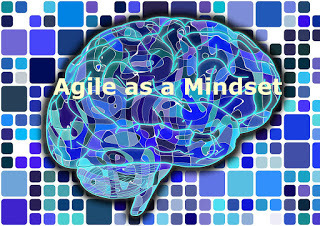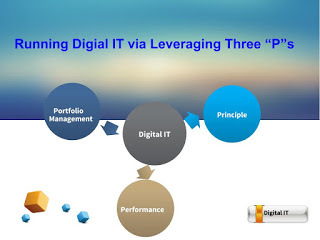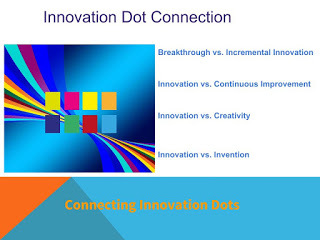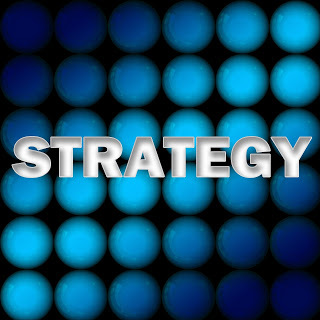Pearl Zhu's Blog, page 1351
April 4, 2016
Three Questions to Assess a Person’s Time Management Skill
 We are experiencing digital convenience - information only clicks away, there are omnipresent technologies, multi-channel communication, and seamless shopping experience. Perhaps we also face the digital dilemma, shall you always keep the hands busy, or keep your mind full? Do you keep “busyness” or keep improving? It seems that there is never enough time in the day. But, since we all get the same 24 hours per day, why is it that some people achieve so much more with their time than others? The answer lies in good "TIME MANAGEMENT." So how to assess a person’s Time Management skill?
We are experiencing digital convenience - information only clicks away, there are omnipresent technologies, multi-channel communication, and seamless shopping experience. Perhaps we also face the digital dilemma, shall you always keep the hands busy, or keep your mind full? Do you keep “busyness” or keep improving? It seems that there is never enough time in the day. But, since we all get the same 24 hours per day, why is it that some people achieve so much more with their time than others? The answer lies in good "TIME MANAGEMENT." So how to assess a person’s Time Management skill?
Can you set the right priority and have the discipline to do the most important things for you (or for the business) first? Time Management prioritizes actions. Time management is not about punctuality and working to be and remain punctual has nothing to do with having time management skill. Time management is the process of organizing and planning how much time you spend on specific activities. Invest some time to learn about managing your own time more efficiently, and save yourself time in the future. The irony is that there are lot many classes on Time management, but self-discipline as a part of character and virtue is never taught. There are three components of action - the ones that need immediate attention, the ones that have to have a well-thought-out action & long term vision, and the ones you need not worry about too much. The time management skill helps you decide the course. The third may be either get ignored or can be delegated. The second you must make well plan and pay attention to, as they are important. It also takes time management skills for the "immediate action,” to save time either via collaboration or delegation if you are the manager.
Do you spend more time on repetitive tasks, or do you take more time on practicing creativity? The effective time management boosts creativity: It makes you creative oriented, mature and generous enough to share the experience of success journey. It makes one bold and shed the fear of failure, lethargic tendency and any inability that prevent from progress. Time Management is all about choosing to help oneself by being able to put in efforts only after you have prepared self to take and bear risks of meeting and facing challenges of fears and their beliefs which blind others. Good Time Management skill can build confidence and new capabilities, which can be gained through self-improvement; from the inner transformation of self. We need to be very vigilant about time. Life is so short and there is so much to do that we always wish that our day had more than 24 hours. The wise time management can make life more meaningful, creative and productive.
 What is the time in terms of anthropology? We use the time to organize our stories, especially those explanations, motivations, and consequences of events. Time helps people prioritize culturally and personally relevant events. Time is the order of moments in which the mind perceives the changes. Hence, it is the construction of the mind. Time in physical terms is a measurement of the movement of one thing in relation to the other. Einstein defined it as "the past is that which sends light signals to us; the future is that which we send light signals to." Time was invented to keep track of things, in a human's logical sense, measurement is the nature. Time is a concept with many side effectsTime is Money...Time is Discipline...Time is flyingTime is order.Time is to just move on…Time is potential, to be used or squandered as the opportunities of life present themselves.
What is the time in terms of anthropology? We use the time to organize our stories, especially those explanations, motivations, and consequences of events. Time helps people prioritize culturally and personally relevant events. Time is the order of moments in which the mind perceives the changes. Hence, it is the construction of the mind. Time in physical terms is a measurement of the movement of one thing in relation to the other. Einstein defined it as "the past is that which sends light signals to us; the future is that which we send light signals to." Time was invented to keep track of things, in a human's logical sense, measurement is the nature. Time is a concept with many side effectsTime is Money...Time is Discipline...Time is flyingTime is order.Time is to just move on…Time is potential, to be used or squandered as the opportunities of life present themselves.
Time is the most perishable thing, it is not storable. Time does not wait for anyone, and it treats everyone equally. Time management coupled with discipline is the first step towards building competency and achieving professional goals or business goals. Time Management skill can reflect a digital professional’s mindset, attitude, and behavior. The person who is able to utilize the time wisely is rich and prosperous, creative and confident, with potential to achieve more.
Follow us at: @Pearl_Zhu
Published on April 04, 2016 23:23
CIO Master Book Preview Chapter 9 IT Agility
Agile is the "State of Mind"
 Agility is not only the ability to create changes, but also the capability to adapt to changes. Within IT, organizational agility should be defined as the speed in which the organization can enable the enterprise's goals and objectives. IT agility is about how IT will enable business agility, how fast IT will deliver he required products and services effectively and efficiently. The more integral business and IT become, the higher level of agility for both will be achieved.
Agility is not only the ability to create changes, but also the capability to adapt to changes. Within IT, organizational agility should be defined as the speed in which the organization can enable the enterprise's goals and objectives. IT agility is about how IT will enable business agility, how fast IT will deliver he required products and services effectively and efficiently. The more integral business and IT become, the higher level of agility for both will be achieved.
Agile is the set of guidelines: In order for any methodology to be truly agile, it must be adaptive. That is, there should be regular reflection and updates to the methodology to eliminate what does not work and try things that might work. It is important to recognize that moving to Agile may require a significant culture change that require affects the entire business. It is certainly not just a ‘development thing.’ Agile is a set of principles, but it also comes from many different groups of practices finding common ground. Principles alone are not enough. You also need to develop a set of “practices” to improve agility and increase quality. You are not agile until your practices match your principles, as they can not be separated completely.
Agility requires a set of complementary and strategic IT competencies: It includes but not limited to portfolio management, project management, change management, etc. there should be a rolling plan in addition to the mid-term or long-term strategic planning. The business need for agility arises due to changes in underlying assumptions. If these changes are captured in the rolling plan, flexibility can be achieved. The purpose of building an Agile IT is to pursue an optimal way running IT, to enable business innovation and transformation via taking advantage of the organization’s resources, and cultivate a set of necessary and unique business capabilities to gain competitive business advantage.
 Agile is better at adapting to changes and ensuring quality: Agile development techniques focus on solving the problems that arise because the customer’s needs evolve over time. And software development takes time, so any process that doesn’t account for changing needs or requirement can only produce a product that is meeting an outdated set of needs, usually to a bad result. So the CIO’s agile way is to run IT as a software startup, includes quick iteration, continuous improvement, and regular delivery because it’s the most effective way to remove risk and deliver quality software. CIO’s agile way is to be able to be equipped with the agile mindset, make strategic decisions and change directions more promptly, it allows IT leader to run IT as a business, treat software as a strategic asset, improve the success rate and manage IT with agility.
Agile is better at adapting to changes and ensuring quality: Agile development techniques focus on solving the problems that arise because the customer’s needs evolve over time. And software development takes time, so any process that doesn’t account for changing needs or requirement can only produce a product that is meeting an outdated set of needs, usually to a bad result. So the CIO’s agile way is to run IT as a software startup, includes quick iteration, continuous improvement, and regular delivery because it’s the most effective way to remove risk and deliver quality software. CIO’s agile way is to be able to be equipped with the agile mindset, make strategic decisions and change directions more promptly, it allows IT leader to run IT as a business, treat software as a strategic asset, improve the success rate and manage IT with agility.
The overall goal of adopting a more “Agile” approach is “resilience”: to increase value received and decrease risks. An agile organization at any scale that can retain an overall sense of vision and purpose, can communicate effectively, continuously improve, reflect on its own limitations, respond to change dynamically. It is a journey from “doing Agile,” to “being agile.”Follow us at: @Pearl_Zhu
 Agility is not only the ability to create changes, but also the capability to adapt to changes. Within IT, organizational agility should be defined as the speed in which the organization can enable the enterprise's goals and objectives. IT agility is about how IT will enable business agility, how fast IT will deliver he required products and services effectively and efficiently. The more integral business and IT become, the higher level of agility for both will be achieved.
Agility is not only the ability to create changes, but also the capability to adapt to changes. Within IT, organizational agility should be defined as the speed in which the organization can enable the enterprise's goals and objectives. IT agility is about how IT will enable business agility, how fast IT will deliver he required products and services effectively and efficiently. The more integral business and IT become, the higher level of agility for both will be achieved.
Agile is the set of guidelines: In order for any methodology to be truly agile, it must be adaptive. That is, there should be regular reflection and updates to the methodology to eliminate what does not work and try things that might work. It is important to recognize that moving to Agile may require a significant culture change that require affects the entire business. It is certainly not just a ‘development thing.’ Agile is a set of principles, but it also comes from many different groups of practices finding common ground. Principles alone are not enough. You also need to develop a set of “practices” to improve agility and increase quality. You are not agile until your practices match your principles, as they can not be separated completely.
Agility requires a set of complementary and strategic IT competencies: It includes but not limited to portfolio management, project management, change management, etc. there should be a rolling plan in addition to the mid-term or long-term strategic planning. The business need for agility arises due to changes in underlying assumptions. If these changes are captured in the rolling plan, flexibility can be achieved. The purpose of building an Agile IT is to pursue an optimal way running IT, to enable business innovation and transformation via taking advantage of the organization’s resources, and cultivate a set of necessary and unique business capabilities to gain competitive business advantage.
 Agile is better at adapting to changes and ensuring quality: Agile development techniques focus on solving the problems that arise because the customer’s needs evolve over time. And software development takes time, so any process that doesn’t account for changing needs or requirement can only produce a product that is meeting an outdated set of needs, usually to a bad result. So the CIO’s agile way is to run IT as a software startup, includes quick iteration, continuous improvement, and regular delivery because it’s the most effective way to remove risk and deliver quality software. CIO’s agile way is to be able to be equipped with the agile mindset, make strategic decisions and change directions more promptly, it allows IT leader to run IT as a business, treat software as a strategic asset, improve the success rate and manage IT with agility.
Agile is better at adapting to changes and ensuring quality: Agile development techniques focus on solving the problems that arise because the customer’s needs evolve over time. And software development takes time, so any process that doesn’t account for changing needs or requirement can only produce a product that is meeting an outdated set of needs, usually to a bad result. So the CIO’s agile way is to run IT as a software startup, includes quick iteration, continuous improvement, and regular delivery because it’s the most effective way to remove risk and deliver quality software. CIO’s agile way is to be able to be equipped with the agile mindset, make strategic decisions and change directions more promptly, it allows IT leader to run IT as a business, treat software as a strategic asset, improve the success rate and manage IT with agility.The overall goal of adopting a more “Agile” approach is “resilience”: to increase value received and decrease risks. An agile organization at any scale that can retain an overall sense of vision and purpose, can communicate effectively, continuously improve, reflect on its own limitations, respond to change dynamically. It is a journey from “doing Agile,” to “being agile.”Follow us at: @Pearl_Zhu
Published on April 04, 2016 23:20
April 3, 2016
IT Agility Sum Up: Agile Measurement
Agility within and of itself is a strategy.
 Agility is not only the ability to create the change, but also the capability to adapt to the changes. Within an IT, organizational agility should be defined as the speed in which the organization can enable the enterprise's goals and objectives as IT strategy is an integral element of business strategy. Agile is a culture as well!It is important to recognize that moving to Agile may require a significant culture change that affects the entire business. It certainly is NOT just a "development thing.”
Agility is not only the ability to create the change, but also the capability to adapt to the changes. Within an IT, organizational agility should be defined as the speed in which the organization can enable the enterprise's goals and objectives as IT strategy is an integral element of business strategy. Agile is a culture as well!It is important to recognize that moving to Agile may require a significant culture change that affects the entire business. It certainly is NOT just a "development thing.”
Agile MeasurementThree Aspects of Agility Measurement: Nowadays, “VUCA” (Velocity, Uncertainty, Complexity, and Ambiguity) is the new characteristics of the digital business, and the speed of change is accelerating. Therefore, agility - the business ability to sense, response, and take actions to changes, is a strategic imperative for companies’ surviving and thriving. But if you can only manage what you measure, how to measure business agility in order to continue building and improving business change capability and maturity?
Agile Measurement Many organizations are shifting from Waterfall to Agile mode. Agile does not take less discipline but needs more engineering and management discipline. Given that business initiatives are unique endeavors, it would take a substantial number of projects using comparably skilled resources and different approaches to having unbiased metrics concerning alternative approaches. As Drucker wisely pointed out," you can only manage what you measure." But how to measure Agile success effectively?
What are the Agile Metrics for Senior Management Agile is not only the methodology to manage software projects, but also a philosophy to run a digital organization. More and more senior executives or cross-functional group leaders intend to learn more about Agile, besides major agile principles, what’re the significant details they would like to know? What kind of agile metrics the development team should track, that can be presented to leadership and has been a value add. Also, keep in mind, such tracking is not pressurizing the development team negatively, but for improving project success rate.
How to Measure the Maturity of Organizational Agility: Many forward-looking organizations are moving from doing Agile to being agile if we can only manage what we measure, how to measure the maturity of organizational agility? The measuring needs to go beyond agile, because "agility" is a philosophy of managing complexity and unpredictability through empiricism. How do you measure a philosophy?
 Three Aspects to Measure Organizational Maturity: Organizations today are over-complex and hyper-competitive, management continues to keep the business running, but the lack of insight on how well their organization is doing for the long term. Is it functioning well or dysfunctional? Which management metrics shall you apply to measure organizational overall health and maturity? Who and what tools are being applied to measure if an organization is healthy or sick? Proactive or reactive? Intelligent or dumb? Customer-centric or operational driven?
Three Aspects to Measure Organizational Maturity: Organizations today are over-complex and hyper-competitive, management continues to keep the business running, but the lack of insight on how well their organization is doing for the long term. Is it functioning well or dysfunctional? Which management metrics shall you apply to measure organizational overall health and maturity? Who and what tools are being applied to measure if an organization is healthy or sick? Proactive or reactive? Intelligent or dumb? Customer-centric or operational driven?
The “Future of CIO” Blog has reached 1.3 million pageviews with about about 2600+ blog posting in 59+ different categories of leadership, management, strategy, digitalization, change/talent, etc. The content richness is not for its own sake, but to convey the vision and share the wisdom. Blogging is not about writing, but about thinking; it’s not just about WHAT to say, but about WHY to say, and HOW to say it. It reflects the color and shade of your thought patterns, and it indicates the peaks and curves of your thinking waves. Unlike pure entertainment, quality and professional content takes time for digesting, contemplation and engaging, and therefore, it takes time to attract the "hungry minds" and the "deep souls." It’s the journey to amplify your voice, deepen your digital footprints, and match your way for human progression.Follow us at: @Pearl_Zhu
 Agility is not only the ability to create the change, but also the capability to adapt to the changes. Within an IT, organizational agility should be defined as the speed in which the organization can enable the enterprise's goals and objectives as IT strategy is an integral element of business strategy. Agile is a culture as well!It is important to recognize that moving to Agile may require a significant culture change that affects the entire business. It certainly is NOT just a "development thing.”
Agility is not only the ability to create the change, but also the capability to adapt to the changes. Within an IT, organizational agility should be defined as the speed in which the organization can enable the enterprise's goals and objectives as IT strategy is an integral element of business strategy. Agile is a culture as well!It is important to recognize that moving to Agile may require a significant culture change that affects the entire business. It certainly is NOT just a "development thing.”
Agile MeasurementThree Aspects of Agility Measurement: Nowadays, “VUCA” (Velocity, Uncertainty, Complexity, and Ambiguity) is the new characteristics of the digital business, and the speed of change is accelerating. Therefore, agility - the business ability to sense, response, and take actions to changes, is a strategic imperative for companies’ surviving and thriving. But if you can only manage what you measure, how to measure business agility in order to continue building and improving business change capability and maturity?
Agile Measurement Many organizations are shifting from Waterfall to Agile mode. Agile does not take less discipline but needs more engineering and management discipline. Given that business initiatives are unique endeavors, it would take a substantial number of projects using comparably skilled resources and different approaches to having unbiased metrics concerning alternative approaches. As Drucker wisely pointed out," you can only manage what you measure." But how to measure Agile success effectively?
What are the Agile Metrics for Senior Management Agile is not only the methodology to manage software projects, but also a philosophy to run a digital organization. More and more senior executives or cross-functional group leaders intend to learn more about Agile, besides major agile principles, what’re the significant details they would like to know? What kind of agile metrics the development team should track, that can be presented to leadership and has been a value add. Also, keep in mind, such tracking is not pressurizing the development team negatively, but for improving project success rate.
How to Measure the Maturity of Organizational Agility: Many forward-looking organizations are moving from doing Agile to being agile if we can only manage what we measure, how to measure the maturity of organizational agility? The measuring needs to go beyond agile, because "agility" is a philosophy of managing complexity and unpredictability through empiricism. How do you measure a philosophy?
 Three Aspects to Measure Organizational Maturity: Organizations today are over-complex and hyper-competitive, management continues to keep the business running, but the lack of insight on how well their organization is doing for the long term. Is it functioning well or dysfunctional? Which management metrics shall you apply to measure organizational overall health and maturity? Who and what tools are being applied to measure if an organization is healthy or sick? Proactive or reactive? Intelligent or dumb? Customer-centric or operational driven?
Three Aspects to Measure Organizational Maturity: Organizations today are over-complex and hyper-competitive, management continues to keep the business running, but the lack of insight on how well their organization is doing for the long term. Is it functioning well or dysfunctional? Which management metrics shall you apply to measure organizational overall health and maturity? Who and what tools are being applied to measure if an organization is healthy or sick? Proactive or reactive? Intelligent or dumb? Customer-centric or operational driven? The “Future of CIO” Blog has reached 1.3 million pageviews with about about 2600+ blog posting in 59+ different categories of leadership, management, strategy, digitalization, change/talent, etc. The content richness is not for its own sake, but to convey the vision and share the wisdom. Blogging is not about writing, but about thinking; it’s not just about WHAT to say, but about WHY to say, and HOW to say it. It reflects the color and shade of your thought patterns, and it indicates the peaks and curves of your thinking waves. Unlike pure entertainment, quality and professional content takes time for digesting, contemplation and engaging, and therefore, it takes time to attract the "hungry minds" and the "deep souls." It’s the journey to amplify your voice, deepen your digital footprints, and match your way for human progression.Follow us at: @Pearl_Zhu
Published on April 03, 2016 23:46
Three Questions to Assess a Person’s Persuasiveness Skill
 There are different languages for leadership and business communication, one of which is "persuasion," the capability of a person or argument to convince someone to accept a desired way of thinking. It becomes an important skill because today’s workforce is multi-generational, multi-cultural, people bring up different viewpoint to the table which is great, but to make an agreement with certain important issues, being persuasiveness is crucial to harmonize and solve problems more frictionlessly. What’re the good questions to assess a person’s “persuasiveness” skill?
There are different languages for leadership and business communication, one of which is "persuasion," the capability of a person or argument to convince someone to accept a desired way of thinking. It becomes an important skill because today’s workforce is multi-generational, multi-cultural, people bring up different viewpoint to the table which is great, but to make an agreement with certain important issues, being persuasiveness is crucial to harmonize and solve problems more frictionlessly. What’re the good questions to assess a person’s “persuasiveness” skill?
How profound can you make influence on others? Influence and persuasion are so closely linked they are probably the same thing. To be persuasive, means to be able to shape other people's views or opinions towards one's own views or perspectives. Nowaday, every digital professional need to have certain level of leadership quality and potential in order to solve business problems more effectively, and persuasiveness is one of such leadership qualities. To lead, you need to persuade others to follow, they will not follow unless they are influenced by your persuasion. Persuasiveness is so interrelated with influence, and influence can be used to define a good leader who all have a vision and influence with that vision or toward that vision or to contribute to that vision. Knowledge is power, in order to be persuasive, you need to have vision, knowledge, insight, and wisdom to make profound influence.
Are you intentional practicing the persuasiveness skills via building trust and confidence? Influence and persuasion begin with trust, but influence does not necessarily come as a giving to a person with a high trust index. It’s a skill to be learned, a persuasive communication, exemplary leadership, personal sacrifice, all held together by a collection of confidence. Trustworthiness without influence is like an activity report, not an insightful book; Influence without Trustworthiness is like a book cover without context & content. The purpose of leadership persuasiveness is to convey the vision, update the outdated viewpoint, or get the work done promptly. It’s a cohesive effort to fulfill the the purpose of leadership which is to awaken possibility in people to deliver extraordinary results. Leadership is the art of getting someone else do something you need to be done, and they want to do it!" (Eisenhower).
 What are your persuasiveness and influence styles? Are you practicing persuasiveness and make Influence via inspiring, to encourage others toward your vision by communicating in depth and breadth? Do you make Influence via asserting, to present ideas via confidence & persuasion and expertise? Do you persuade via negotiating and exchanging, to get others’ see your point of view, make tradeoff or compromise; Do you make Influence via bridging: to rely on reciprocity, attempt to influence outcomes by uniting or connecting with others; or do you persuade via rationalizing, data analytics. Influence style is not always poetic, it can be made via logic and reasoning; data and statistics.
What are your persuasiveness and influence styles? Are you practicing persuasiveness and make Influence via inspiring, to encourage others toward your vision by communicating in depth and breadth? Do you make Influence via asserting, to present ideas via confidence & persuasion and expertise? Do you persuade via negotiating and exchanging, to get others’ see your point of view, make tradeoff or compromise; Do you make Influence via bridging: to rely on reciprocity, attempt to influence outcomes by uniting or connecting with others; or do you persuade via rationalizing, data analytics. Influence style is not always poetic, it can be made via logic and reasoning; data and statistics.Every profession and role has its unique influence in the world, being persuasive is an important professional quality based on courage to influence, knowledge to understand, confidence to assert, wisdom to negotiate, uniqueness to bridge; to share the vision, be mindful and get things down in harmonized way.
Follow us at: @Pearl_Zhu
Published on April 03, 2016 23:41
“CIO Master” Book Preview: Chapter 8 Three “P”s in Running Digital IT
IT has to become a true business partner in the company via leveraging these three “P”s.
 Information is like lifeblood, and technology is like a backbone for any digital organization nowadays. However, most IT organizations have a reputation as a cost center and a controller. To reimagine IT potential, reinvent IT management and maximize IT value, it’s important to set guiding principles for practicing the multitude of IT management, manage a healthy IT project/program portfolio, also make a continuous journey of improving IT performance via developing a set of best/next practices for harnessing IT efficiency, effectiveness, and maturity.
Information is like lifeblood, and technology is like a backbone for any digital organization nowadays. However, most IT organizations have a reputation as a cost center and a controller. To reimagine IT potential, reinvent IT management and maximize IT value, it’s important to set guiding principles for practicing the multitude of IT management, manage a healthy IT project/program portfolio, also make a continuous journey of improving IT performance via developing a set of best/next practices for harnessing IT efficiency, effectiveness, and maturity.
The guiding PRINCIPLEs should cover the customer, people, and quality from a holistic business perspective: A well-defined set of IT management principles would guide decision making, bridge IT-business gaps, do more with innovation, measure right things before measuring it right. Principles allow many people to individually make their own decisions to run in the same direction to meet the same objectives in a rapid manner. Not everyone will follow, but they should if possible. As principles provide a guideline of harmonizing decision-making and navigate IT toward the right direction and speed up the organization to the well-planned destination. Though it’s not easy for a set of principles defined that can be applied holistically. Their content sometimes contains natural conflict, without a method of prioritizing and implementing them consistently, they become a source of contention. Hence, business/IT leaders have to articulate which principle is applicable in which situation. Principles are guidelines, not rigid rules, there needs to be a pragmatic way of applying whatever principles to the problem in a consistent manner, with the goal to achieve strategic goals and guide daily business activities effectively.
Portfolio, Program, and Project Management: One of the significant IT management responsibilities is to manage a healthy project portfolio to implement business strategy, every IT project is a business initiative as well. Collections of programs and projects that are designed to help the organization achieve its targeted performance are the means through which a vision is translated into practices. They are the vehicle to achieve business strategic goals. IT has been unable to demonstrate the value in application portfolio management historically. Project management takes a lot of work, it’s important to develop “dealing with complexity” mechanisms for managing enterprise projects. While some organizations may be excellent in the execution of project management, they do not have a mature portfolio management process in place, which causes issues with the strategy alignment of programs and portfolio. In order to make the portfolio executable, an organization needs to make sure enough resources are available to deliver projects and programs, also manage the interdependencies of the project accordingly. And portfolio rationalization is an activity more critical than ever because economic cycles are getting shorter, and decision cycles are getting short. In order to make the portfolio executable, an organization needs to make sure that enough resources are available to deliver the projects and programs, and a well-managed project portfolio will keep the business run, grow and transformation steadily.
 The best practices to improve IT PERFORMANCE and make effective measurement: IT is a key enabler to build almost all differentiated digital business capabilities nowadays. However, it’s not easy because it requires changing the culture and getting the buy-in of IT resource/ Though the situation varies, there are a couple of key steps can be shared in improving IT performance across vertical sectors. It’s also important to measure IT success in meeting the business purpose and vision. Your measures should cover all areas that contribute to value creation including service quality, employee engagement, customer satisfaction and financial outcomes. There represent well as a balanced scorecard. A meaningful scorecard needs to originate from all involved, with appropriate visual design allows users to examine and perceive a large amount of information very quickly and use them to see the big picture or identify any items that deserve attention and further analysis.
The best practices to improve IT PERFORMANCE and make effective measurement: IT is a key enabler to build almost all differentiated digital business capabilities nowadays. However, it’s not easy because it requires changing the culture and getting the buy-in of IT resource/ Though the situation varies, there are a couple of key steps can be shared in improving IT performance across vertical sectors. It’s also important to measure IT success in meeting the business purpose and vision. Your measures should cover all areas that contribute to value creation including service quality, employee engagement, customer satisfaction and financial outcomes. There represent well as a balanced scorecard. A meaningful scorecard needs to originate from all involved, with appropriate visual design allows users to examine and perceive a large amount of information very quickly and use them to see the big picture or identify any items that deserve attention and further analysis.
IT has to become a true business partner in the company via leveraging these three “P”s. Setting IT management PRINCIPLES to guide decision making and bridge IT-business gaps. Managing IT PROJECT/PROGRAM/PORTFOLIO effectively to achieve business value, and improve IT PERFORMANCE to maximize ROI and reach a higher level of digital maturity.
CIO Master Order Link on AmazonCIO Master Ordre Link on Barner & NobleCIO Master Order LinkOn IBooks
“CIO Master” Book Preview: Chapter 8 Three "P"s in Running Digital IT
“CIO Master” Book Preview: Chapter 7 IT Innovation Management
“CIO Master” Book Preview: Chapter 6 Digital Strategy-Execution Continuum
"CIO Master” Book Preview: Chapter 5 Thirteen Digital Flavored IT
“CIO Master” Book Preview: Chapter 4 CIO as Talent Master Introduction
“CIO Master” Book Preview: Chapter 3 “CIOs as Change Agent” Introduction
“CIO Master” Book Preview: Chapter 2 “CIOs as Digital Visionary” Introduction
“CIO Master” Book Preview: Chapter 1 “Twelve Digital CIO Personas” Introduction
"CIO Master - Unleash the Digital Potential of IT" Introduction
"CIO Master - Unleash the Digital Potential of IT" Book PreviewFollow us at: @Pearl_Zhu
 Information is like lifeblood, and technology is like a backbone for any digital organization nowadays. However, most IT organizations have a reputation as a cost center and a controller. To reimagine IT potential, reinvent IT management and maximize IT value, it’s important to set guiding principles for practicing the multitude of IT management, manage a healthy IT project/program portfolio, also make a continuous journey of improving IT performance via developing a set of best/next practices for harnessing IT efficiency, effectiveness, and maturity.
Information is like lifeblood, and technology is like a backbone for any digital organization nowadays. However, most IT organizations have a reputation as a cost center and a controller. To reimagine IT potential, reinvent IT management and maximize IT value, it’s important to set guiding principles for practicing the multitude of IT management, manage a healthy IT project/program portfolio, also make a continuous journey of improving IT performance via developing a set of best/next practices for harnessing IT efficiency, effectiveness, and maturity.
The guiding PRINCIPLEs should cover the customer, people, and quality from a holistic business perspective: A well-defined set of IT management principles would guide decision making, bridge IT-business gaps, do more with innovation, measure right things before measuring it right. Principles allow many people to individually make their own decisions to run in the same direction to meet the same objectives in a rapid manner. Not everyone will follow, but they should if possible. As principles provide a guideline of harmonizing decision-making and navigate IT toward the right direction and speed up the organization to the well-planned destination. Though it’s not easy for a set of principles defined that can be applied holistically. Their content sometimes contains natural conflict, without a method of prioritizing and implementing them consistently, they become a source of contention. Hence, business/IT leaders have to articulate which principle is applicable in which situation. Principles are guidelines, not rigid rules, there needs to be a pragmatic way of applying whatever principles to the problem in a consistent manner, with the goal to achieve strategic goals and guide daily business activities effectively.
Portfolio, Program, and Project Management: One of the significant IT management responsibilities is to manage a healthy project portfolio to implement business strategy, every IT project is a business initiative as well. Collections of programs and projects that are designed to help the organization achieve its targeted performance are the means through which a vision is translated into practices. They are the vehicle to achieve business strategic goals. IT has been unable to demonstrate the value in application portfolio management historically. Project management takes a lot of work, it’s important to develop “dealing with complexity” mechanisms for managing enterprise projects. While some organizations may be excellent in the execution of project management, they do not have a mature portfolio management process in place, which causes issues with the strategy alignment of programs and portfolio. In order to make the portfolio executable, an organization needs to make sure enough resources are available to deliver projects and programs, also manage the interdependencies of the project accordingly. And portfolio rationalization is an activity more critical than ever because economic cycles are getting shorter, and decision cycles are getting short. In order to make the portfolio executable, an organization needs to make sure that enough resources are available to deliver the projects and programs, and a well-managed project portfolio will keep the business run, grow and transformation steadily.
 The best practices to improve IT PERFORMANCE and make effective measurement: IT is a key enabler to build almost all differentiated digital business capabilities nowadays. However, it’s not easy because it requires changing the culture and getting the buy-in of IT resource/ Though the situation varies, there are a couple of key steps can be shared in improving IT performance across vertical sectors. It’s also important to measure IT success in meeting the business purpose and vision. Your measures should cover all areas that contribute to value creation including service quality, employee engagement, customer satisfaction and financial outcomes. There represent well as a balanced scorecard. A meaningful scorecard needs to originate from all involved, with appropriate visual design allows users to examine and perceive a large amount of information very quickly and use them to see the big picture or identify any items that deserve attention and further analysis.
The best practices to improve IT PERFORMANCE and make effective measurement: IT is a key enabler to build almost all differentiated digital business capabilities nowadays. However, it’s not easy because it requires changing the culture and getting the buy-in of IT resource/ Though the situation varies, there are a couple of key steps can be shared in improving IT performance across vertical sectors. It’s also important to measure IT success in meeting the business purpose and vision. Your measures should cover all areas that contribute to value creation including service quality, employee engagement, customer satisfaction and financial outcomes. There represent well as a balanced scorecard. A meaningful scorecard needs to originate from all involved, with appropriate visual design allows users to examine and perceive a large amount of information very quickly and use them to see the big picture or identify any items that deserve attention and further analysis.
IT has to become a true business partner in the company via leveraging these three “P”s. Setting IT management PRINCIPLES to guide decision making and bridge IT-business gaps. Managing IT PROJECT/PROGRAM/PORTFOLIO effectively to achieve business value, and improve IT PERFORMANCE to maximize ROI and reach a higher level of digital maturity.
CIO Master Order Link on AmazonCIO Master Ordre Link on Barner & NobleCIO Master Order LinkOn IBooks
“CIO Master” Book Preview: Chapter 8 Three "P"s in Running Digital IT
“CIO Master” Book Preview: Chapter 7 IT Innovation Management
“CIO Master” Book Preview: Chapter 6 Digital Strategy-Execution Continuum
"CIO Master” Book Preview: Chapter 5 Thirteen Digital Flavored IT
“CIO Master” Book Preview: Chapter 4 CIO as Talent Master Introduction
“CIO Master” Book Preview: Chapter 3 “CIOs as Change Agent” Introduction
“CIO Master” Book Preview: Chapter 2 “CIOs as Digital Visionary” Introduction
“CIO Master” Book Preview: Chapter 1 “Twelve Digital CIO Personas” Introduction
"CIO Master - Unleash the Digital Potential of IT" Introduction
"CIO Master - Unleash the Digital Potential of IT" Book PreviewFollow us at: @Pearl_Zhu
Published on April 03, 2016 23:39
April 2, 2016
Three Questions to Assess a Person’s Motivation or “Self-Motivation” Skill
 Motivation is having a passion or drive for achievement and continuous improvement. To "motivate" is the act of giving somebody a reason or incentive to do something, to get other people to move into action, to act on whatever view you have influenced to take. And self-motivation is to get yourself doing things with discipline, practice and performing well.
Motivation is having a passion or drive for achievement and continuous improvement. To "motivate" is the act of giving somebody a reason or incentive to do something, to get other people to move into action, to act on whatever view you have influenced to take. And self-motivation is to get yourself doing things with discipline, practice and performing well.
What’s your motivational potential: Motivating' requires giving someone a 'motive,' usually self-interest along the lines. Motivation is moving forward, taking action. Assessing a person’s motivational potential is how well he/she can adapt personal drive and focus on performing well in new and changing context (self-motivation). It’s also about how you can motivate people moving more into the area of coaching or mentoring because you are motivating people by allowing them to learn by giving them the time and the confidence to work out for themselves what needs to be done in certain situations.
“Push” or “Pull,” which one is more effective for motivation? Motivation is the personal needs for each one and it is different according to personality and culture. Motivated has two elements of push and pull factor. You are motivated to move away from something because it is painful and also move towards something which is inspiring. Inspiration is something that elicits an awe or admiration that can also motivate you to action. So, inspiration is the pull factor in the continuum of motivation. Motivation is at the ground level and immediate. It can be either the carrot or the stick. Motivation is the additional urge to get something done. The only one who can motivate you is you. You have to have the desire and be willing to challenge yourself to be all you can be. As the saying goes, “Give me a person who is eager to learn and I can teach him anything. Give me a person who does not want to learn and I can teach him nothing.”
 Do you often motivate others based on inspiring or fear? A strong leader can inspire you and leads to motivation to take action or change. Fear is an effective motivator but only for a short run. As soon as you remove the threat the motivation is removed as well. True leaders don't lead by fear but rather by respect. Mutual respect goes both ways up-and-down the ladder. Inspiration creates synergy in strengthening positive thinking and influencing, An inspirational leaders can build trust through the empathic message and exemplary actions.
Do you often motivate others based on inspiring or fear? A strong leader can inspire you and leads to motivation to take action or change. Fear is an effective motivator but only for a short run. As soon as you remove the threat the motivation is removed as well. True leaders don't lead by fear but rather by respect. Mutual respect goes both ways up-and-down the ladder. Inspiration creates synergy in strengthening positive thinking and influencing, An inspirational leaders can build trust through the empathic message and exemplary actions. Motivation is to drive action; motivation is not a feeling but describes the trajectory of a behavior. As such, motivation can be understood and influenced using behavioral principles, motivation is to compete to win, but better winning with a purpose. And inspiration and motivation are the good pairs to act in the right direction and achieve a sustainable result. Follow us at: @Pearl_Zhu
Published on April 02, 2016 23:38
“CIO Master” Book Preview: Chapter 7 “IT Innovation Management” Introduction
 Businesses today face fiery competition and rapid digital shift technologically and economically, hence, innovation becomes a “must have” strategic capability to compete for the long term success. Innovation today has more enriched context than ever, there are many forms of innovations from incremental to radical breakthrough innovation; from “hard” innovation such as products/services/process/business model innovation to “soft” innovations such as communication innovation, culture innovation, or management innovation etc., just to name a few. Each has its own unique pathways. Innovation is difficult, and innovation in a business context is a structured management discipline, so how to identify innovation gaps and what’s a CIO’s comprehensive innovation agenda to manage a balanced innovation portfolio?
Businesses today face fiery competition and rapid digital shift technologically and economically, hence, innovation becomes a “must have” strategic capability to compete for the long term success. Innovation today has more enriched context than ever, there are many forms of innovations from incremental to radical breakthrough innovation; from “hard” innovation such as products/services/process/business model innovation to “soft” innovations such as communication innovation, culture innovation, or management innovation etc., just to name a few. Each has its own unique pathways. Innovation is difficult, and innovation in a business context is a structured management discipline, so how to identify innovation gaps and what’s a CIO’s comprehensive innovation agenda to manage a balanced innovation portfolio?
Understanding innovation through the lens of business: CIO as a “Chief Innovation Officer” is one of the most appropriate titles for IT leaders today. First, CIOs should build credibility by delivering IT commitment and adding value to operational excellence and business strategy management. The CIO as a “Chief Innovation Officer” generally has a great opportunity to stand out and take a lead in driving innovation across the enterprise scope. Innovation can be categorized as empowered innovation (creative disruption), sustainable innovation (better version of products/services), and efficiency innovation (process innovation), and management innovation (communication, culture, etc.), IT can make a significant impact on all sort of innovation via leveraging the latest digital technology trends, and integrating business factors more seamlessly to improving business processes, building unique organizational capabilities, and enhancing business flexibility and agility.
Managing innovation life cycle in a systematic way: IT should be proactively generating ideas and working with business partners to take those ideas forward, and manage them in a systematic way. IT leaders need to take the time to understand the processes, identify the best companies in the sector, look also at sectors that use technology to create value, and connect further dots to catalyze innovation. IT could be in the right position to management innovation with disciplines, effective processes, and efficient tools such as collaborative platform, analytics tools, etc. at the organizational scope, because the oversight is needed in managing innovation life cycle, IT has a unique advantage to align process, technology and people, from generating ideas on applying technology and data assets to drive value, improve innovation success rate and manage a health innovation portfolio to balance quick win and long-term business growth.
 Building a culture of innovation: It is often true that the majority of IT organizations still cannot articulate their economic value to the board and shareholders in a language they understand, there is also a bit of political battle that goes on where IT claims its proportion of revenue value, even when far more precise mapping exists between costs and revenue. IT needs to mature beyond being a cost center and acts more like business partners or business within a business, to advocate a culture of risk-tolerance, because. Often failure is inevitable for innovation, the fact is “fail fast and fail forward,” to practice CIO’s agenda more aggressively.
Building a culture of innovation: It is often true that the majority of IT organizations still cannot articulate their economic value to the board and shareholders in a language they understand, there is also a bit of political battle that goes on where IT claims its proportion of revenue value, even when far more precise mapping exists between costs and revenue. IT needs to mature beyond being a cost center and acts more like business partners or business within a business, to advocate a culture of risk-tolerance, because. Often failure is inevitable for innovation, the fact is “fail fast and fail forward,” to practice CIO’s agenda more aggressively.
Leading only with operational consideration is not the way forward. IT success needs to be accomplished by working with business partners to leverage opportunities for changing how the business competes in the marketplace. Running IT as an innovation engine needs to close the gaps, keep the balance of bottom line and innovation effort, be customer-centric, and structure, but not stifle innovation.
Follow us at: @Pearl_Zhu
Published on April 02, 2016 23:35
April 1, 2016
IT Agility Sum Up: The Agile Best/Next Practices
Agility within and of itself is a strategy.
 Agility is not only the ability to create the change, but also the capability to adapt to the changes. Within an IT, organizational agility should be defined as the speed in which the organization can enable the enterprise's goals and objectives as IT strategy is an integral element of business strategy. Agile is a culture as well!It is important to recognize that moving to Agile may require a significant culture change that affects the entire business. It certainly is NOT just a "development thing.”
Agility is not only the ability to create the change, but also the capability to adapt to the changes. Within an IT, organizational agility should be defined as the speed in which the organization can enable the enterprise's goals and objectives as IT strategy is an integral element of business strategy. Agile is a culture as well!It is important to recognize that moving to Agile may require a significant culture change that affects the entire business. It certainly is NOT just a "development thing.”
The Agile Best/Next PracticesIs DevOps the Next Thing or the Real Thing: DevOps is a deployment pipeline that stresses communication, collaboration, and integration between software developers and information Technology (IT) professionals. But most of the organizations just talk about it, very few are doing it. So is it just the buzzword, the trending idea, the "next big thing" or the real thing happening? Do you consider DevOps a tool, a technique, a collection of methods, a focus, an approach, or, like agile, a philosophy or mindset?
Agile Practice: How to Set Sustainable Pace in Agile Initiatives -With Agile gaining momentum, the techniques upon how to make it more successful also become a hot topic. For example, how to set a sustainable pace in Agile initiatives? Is Agile velocity more about business values (features) or line of code? Is it more about project effectiveness (doing the right thing) or more about team productivity? And how to continue improving the team’s capacity and capability?
Vertical Slicing Useful or Detrimental to Agility? Agile as a set of values and principles - a philosophy for customer centricity and improvement. And it is a way people found themselves working. And there are many Agile techniques or mechanisms which were experimented or tested. For example, vertical slices are often related to the dependencies between technical stacks. To avoid people wait for each others for progress, a common approach is to define interfaces and create/generate mocks. So people may focus on their slices, but is it still a “Waterfall” mentality? Or will it be detrimental to agility?
 Agile Practices "Up": Many forward-looking organizations are shifting from doing Agile to being Agile. Scaling agile needs to be taken in several dimensions. It's not only the number of developers. There is also the number of teams, the number of sites (including onshore or offshore), the number of time zones, the number of products or values streams the developers work on, and so on. And even more importantly, how to follow the set of agile principles and practice Agile up, to build an agile leadership team or boardroom, and practice agile philosophy to run an entire organization?
Agile Practices "Up": Many forward-looking organizations are shifting from doing Agile to being Agile. Scaling agile needs to be taken in several dimensions. It's not only the number of developers. There is also the number of teams, the number of sites (including onshore or offshore), the number of time zones, the number of products or values streams the developers work on, and so on. And even more importantly, how to follow the set of agile principles and practice Agile up, to build an agile leadership team or boardroom, and practice agile philosophy to run an entire organization?
Agile Tuning: Process vs. Practice: Agile has been adopted as the main principle, philosophy and methodology to manage the project and even run the business today. Within the years of experimenting and tuning, it also develops systematic processes and best or next practices, why are they important for the success of Agile and how to leverage them in Agile management?
The “Future of CIO” Blog has reached 1.3 million pageviews with about 2600+ blog posting in 59+ different categories of leadership, management, strategy, digitalization, change/talent, etc. The content richness is not for its own sake, but to convey the vision and share the wisdom. Blogging is not about writing, but about thinking; it’s not just about WHAT to say, but about WHY to say, and HOW to say it. It reflects the color and shade of your thought patterns, and it indicates the peaks and curves of your thinking waves. Unlike pure entertainment, quality and professional content takes time for digesting, contemplation and engaging, and therefore, it takes the time to attract the "hungry minds" and the "deep souls." It’s the journey to amplify your voice, deepen your digital footprints, and match your way for human progression.Follow us at: @Pearl_Zhu
 Agility is not only the ability to create the change, but also the capability to adapt to the changes. Within an IT, organizational agility should be defined as the speed in which the organization can enable the enterprise's goals and objectives as IT strategy is an integral element of business strategy. Agile is a culture as well!It is important to recognize that moving to Agile may require a significant culture change that affects the entire business. It certainly is NOT just a "development thing.”
Agility is not only the ability to create the change, but also the capability to adapt to the changes. Within an IT, organizational agility should be defined as the speed in which the organization can enable the enterprise's goals and objectives as IT strategy is an integral element of business strategy. Agile is a culture as well!It is important to recognize that moving to Agile may require a significant culture change that affects the entire business. It certainly is NOT just a "development thing.”
The Agile Best/Next PracticesIs DevOps the Next Thing or the Real Thing: DevOps is a deployment pipeline that stresses communication, collaboration, and integration between software developers and information Technology (IT) professionals. But most of the organizations just talk about it, very few are doing it. So is it just the buzzword, the trending idea, the "next big thing" or the real thing happening? Do you consider DevOps a tool, a technique, a collection of methods, a focus, an approach, or, like agile, a philosophy or mindset?
Agile Practice: How to Set Sustainable Pace in Agile Initiatives -With Agile gaining momentum, the techniques upon how to make it more successful also become a hot topic. For example, how to set a sustainable pace in Agile initiatives? Is Agile velocity more about business values (features) or line of code? Is it more about project effectiveness (doing the right thing) or more about team productivity? And how to continue improving the team’s capacity and capability?
Vertical Slicing Useful or Detrimental to Agility? Agile as a set of values and principles - a philosophy for customer centricity and improvement. And it is a way people found themselves working. And there are many Agile techniques or mechanisms which were experimented or tested. For example, vertical slices are often related to the dependencies between technical stacks. To avoid people wait for each others for progress, a common approach is to define interfaces and create/generate mocks. So people may focus on their slices, but is it still a “Waterfall” mentality? Or will it be detrimental to agility?
 Agile Practices "Up": Many forward-looking organizations are shifting from doing Agile to being Agile. Scaling agile needs to be taken in several dimensions. It's not only the number of developers. There is also the number of teams, the number of sites (including onshore or offshore), the number of time zones, the number of products or values streams the developers work on, and so on. And even more importantly, how to follow the set of agile principles and practice Agile up, to build an agile leadership team or boardroom, and practice agile philosophy to run an entire organization?
Agile Practices "Up": Many forward-looking organizations are shifting from doing Agile to being Agile. Scaling agile needs to be taken in several dimensions. It's not only the number of developers. There is also the number of teams, the number of sites (including onshore or offshore), the number of time zones, the number of products or values streams the developers work on, and so on. And even more importantly, how to follow the set of agile principles and practice Agile up, to build an agile leadership team or boardroom, and practice agile philosophy to run an entire organization?
Agile Tuning: Process vs. Practice: Agile has been adopted as the main principle, philosophy and methodology to manage the project and even run the business today. Within the years of experimenting and tuning, it also develops systematic processes and best or next practices, why are they important for the success of Agile and how to leverage them in Agile management?
The “Future of CIO” Blog has reached 1.3 million pageviews with about 2600+ blog posting in 59+ different categories of leadership, management, strategy, digitalization, change/talent, etc. The content richness is not for its own sake, but to convey the vision and share the wisdom. Blogging is not about writing, but about thinking; it’s not just about WHAT to say, but about WHY to say, and HOW to say it. It reflects the color and shade of your thought patterns, and it indicates the peaks and curves of your thinking waves. Unlike pure entertainment, quality and professional content takes time for digesting, contemplation and engaging, and therefore, it takes the time to attract the "hungry minds" and the "deep souls." It’s the journey to amplify your voice, deepen your digital footprints, and match your way for human progression.Follow us at: @Pearl_Zhu
Published on April 01, 2016 23:12
Three Questions to Assess a Person’s Trustworthiness
 The business world and our society become over-complex due to the explosive information, urbanization, and globalization. Trust is one of the key ingredients of future corporate leadership and overall business relationship building. TRUST takes breadth and depth of collective cognizance & effort to build up a more creative working environment. So how to assess a leader or a digital professional’s trustworthiness?
The business world and our society become over-complex due to the explosive information, urbanization, and globalization. Trust is one of the key ingredients of future corporate leadership and overall business relationship building. TRUST takes breadth and depth of collective cognizance & effort to build up a more creative working environment. So how to assess a leader or a digital professional’s trustworthiness?
Can you always keep your word, transparent, and candid, exploring and decisive? People become inspired when they have someone in authority in whom they have absolute trust, or they are surrounded with people they can trust. That means an individual who has a strong moral compass, exhibiting integrity, empathy, thoughtfulness, respect, tolerance, determination, enthusiasm, confidence, understanding, optimism, patience, and a sense of humor is a bonus. Those traits are found in the person in whom the workforce can have the culture of trust and collaboration. Trust is the cornerstone of any relationship/team. Without trust, you will never create a positive workplace environment. With trust, leaders must then have integrity that is consistency in what you think, what you say and what you act. – Walking the Talk.
Do you respect others, also being respected by others? Slow to speak and quick to listen, integrity, credibility and remembering you don't have to know everything! Be authentic and treat others like you want to be treated. The key is respect. If you respect others and inspire their respect in you - good communication, appreciation trust, etc., comes easier. People may have different value systems for trust, leading or working in such a multigenerational, multicultural business environment requires acting in ways that provide clear reasons to decide to trust.
 How to build the optimal level of trust? No blind trust or trust too little. Trust, but verify. There is no returning to the days when organizations expected and received—unconditional loyalty. Communicate, delegate, trust and hold accountable. TRUST is bi-directional. Trust isn't one way. Leader need show staff that you respect them, first, understand what they care, trust them in a safe environment. Help them not to fail, and if they do, show yourself to be trustworthy by supporting them. That will motivate them more than just throwing out some platitudes about trust as the opposite of micro-managing. The employee needs to trust management too. How much will you tolerate mistakes as part of learning? Does your staff feel safe to try something innovative? When employees are allowed to develop and do the job for which they were hired, without micromanagement, they become more self-motivated and rely less on external motivational factors.
How to build the optimal level of trust? No blind trust or trust too little. Trust, but verify. There is no returning to the days when organizations expected and received—unconditional loyalty. Communicate, delegate, trust and hold accountable. TRUST is bi-directional. Trust isn't one way. Leader need show staff that you respect them, first, understand what they care, trust them in a safe environment. Help them not to fail, and if they do, show yourself to be trustworthy by supporting them. That will motivate them more than just throwing out some platitudes about trust as the opposite of micro-managing. The employee needs to trust management too. How much will you tolerate mistakes as part of learning? Does your staff feel safe to try something innovative? When employees are allowed to develop and do the job for which they were hired, without micromanagement, they become more self-motivated and rely less on external motivational factors.
To cope with an uncertain future, leaders need to enable trust. Trust is the only way to deal with uncertain situations; trust can be cultivated by giving the right advice, the right guidance, the right direction. “To be trusted is a greater compliment than being loved.” George MacDonald
Follow us at: @Pearl_Zhu
Published on April 01, 2016 23:09
“CIO Master” Book Preview: Chapter 6 Digital Strategy-Execution Continuum
 We are at the dawn of the Digital Era, the biggest challenge now is the increasing rate of change, and this isn’t going to change. Hence, preparing a strategic plan is important because it points the organization in a direction where it can maximize its value position and reap long term benefit. Nowadays, information is permeating into every function of the business and technology is the disruptive force, hence, IT needs to be part of an overall corporate strategy to accomplish the organizational business objectives. However, often the main problem is that business executives still limit their vision of IT as “IT support a strategy.” Indeed, the CIO’s role as C-level needs to provide technological vision and contribute to the formulation of the business strategy where new trends of technology will provide strategic business capabilities to the business that will enhance the competitive advantages of the organization.
We are at the dawn of the Digital Era, the biggest challenge now is the increasing rate of change, and this isn’t going to change. Hence, preparing a strategic plan is important because it points the organization in a direction where it can maximize its value position and reap long term benefit. Nowadays, information is permeating into every function of the business and technology is the disruptive force, hence, IT needs to be part of an overall corporate strategy to accomplish the organizational business objectives. However, often the main problem is that business executives still limit their vision of IT as “IT support a strategy.” Indeed, the CIO’s role as C-level needs to provide technological vision and contribute to the formulation of the business strategy where new trends of technology will provide strategic business capabilities to the business that will enhance the competitive advantages of the organization.
IT strategy and digital strategy are integrated into business strategy: A digital strategy is not just about the plan to design a pretty website or marketing strategy, it has a purpose of driving customer engagement and experience as a cross-functional responsibility, uniting all silos to contribute to great customer experience. IT strategy as a subcomponent of business strategy is how to leverage the resources and assets of the IT departments to create the optimal business value, generate revenue growth, brand or increased market share. Hence, the digital CIO is not just an IT manager, but an enterprise leadership and executive role who is responsible for information agenda, which includes driving customer engagement and experience as a cross-functional enterprise responsibility.
Vision-strategy-execution flow: Vision is where you want to go, the strategy is about how you get there, the roadmap, and execution is about taking actions and defining measurement to achieve the strategy. And IT needs to get involve in every step of such vision-strategy-execution flow because now technology is changing so rapidly, that ignoring an emerging technology will put our organization behind the competition. CIOs should have a holistic view of the business from the business executive perspectives and to provide added value of information & technology, they should also have the strong business knowledge to be able to communicate with other executives, in order to deliver business-driven solutions, not just IT services.
 Running a bimodal IT to balance agility and stability: In strategy execution practice, even in the simplest organizations, the speed is not homogeneous across the enterprise, there are differences between “front office” and “back office,” enterprises with multiple businesses and associated business models. The traditional IT organizations are often perceived as a “back office” function and slow response to changes. Hence, a bimodal IT can accelerate changes with digital speed and keep business stability with industrial speed. And IT can steadily transform from a support function to a digital transformer.
Running a bimodal IT to balance agility and stability: In strategy execution practice, even in the simplest organizations, the speed is not homogeneous across the enterprise, there are differences between “front office” and “back office,” enterprises with multiple businesses and associated business models. The traditional IT organizations are often perceived as a “back office” function and slow response to changes. Hence, a bimodal IT can accelerate changes with digital speed and keep business stability with industrial speed. And IT can steadily transform from a support function to a digital transformer.
With the increasing speed of changes, digital strategy and execution are interdependent, they are not linear steps, but and iterative continuum. It’s important to follow the logic steps, but be agile and flexible to adapt to the emerging changes in strategy execution. And the success of strategy management undoubtedly lies in the timely execution, selection of KPIs is the another tricky part, but metrics help you keep on the right track of the business objectives, so measure the right things and measure them in the right way to make smooth strategy execution and achieve the ultimate business vision.
“CIO Master” Book Preview: Chapter 4 CIO as Talent Master Introduction“CIO Master” Book Preview: Chapter 3 “CIOs as Change Agent” Introduction“CIO Master” Book Preview: Chapter 2 “CIOs as Digital Visionary” Introduction“CIO Master” Book Preview: Chapter 1 “Twelve Digital CIO Personas” Introduction"CIO Master - Unleash the Digital Potential of IT" Introduction"CIO Master - Unleash the Digital Potential of IT" Book Preview
CIO Master Order Link on AmazonCIO Master Ordre Link on Barner & NobleCIO Master Order LinkOn IBooks
Follow us at: @Pearl_Zhu
Published on April 01, 2016 23:06



